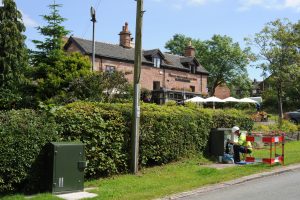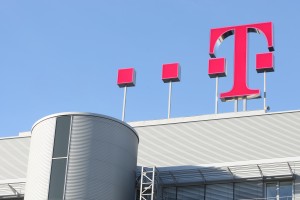There is a common requirement to improve Internet access in many communities. This may be in the form of extending high-speed broadband out to rural areas or implementing next-generation broadband service around a nation or state. It may also include providing a community of financially-disadvantaged users, such as residents of a public housing estate with computer hardware, Internet access and training.
In most of these improvements, there is the involvement of government in facilitating the rollouts and the funds are derived from the money pools that the government has access to courtesy of the taxes that it raises.
Examples of the projects typically range from a local council implementing a Wi-Fi hotzone in its towns or a regional government funding a fibre-optic rollout in its area of responsibility to a national government subsidising Internet rollout projects across the country.
I have covered instances where action concerning Internet-accessibility improvement has been assisted with public money of some sort, such as improvements in Gironde and Vaucluse in France; and many other rural-broadband improvements in the UK.
Here, the question that is often raised is whether such operations should be funded by this public money and assisted by these government entities. This is typically raised by conservative organisations who prefer that little public money be spent on this kind of service delivery and would prefer that this is the responsibility of a private free market.
The free-market argument
The free-market argument underscores the fact that the public money is the “property of the taxpayer” and that government shouldn’t waste their money on these Internet-improvement projects. Instead they would rather that market forces determine the kind of Internet service that is provided.
Similarly the free-market no-public-money argument also underscores a rationale that the money to assist Internet deployment in underserved areas could be better spent on other services like health or road / rail infrastructure. There is also the fear that taxes will be increased in the area so as to cover the Internet-deployment project.
Limitations
This may be OK if there is a vibrant competitive Internet-service market in every part of the country. But where there is a monopoly or cartel managing the Internet service for an area, there can be problems with a totally free-market approach.
For example, it is easier to fail to serve communities based on perceived lack of short-term profitability. This can be aided by various personal prejudices like fear of serving neighbourhoods dominated by minorities. With this, there is less of a likelihood of catering to a changing customer mix in a community. This is more so if the change involves establishing infrastructure in a community where there could be new perceived demand, such as a neighbourhood that has been gentrified or has acquired a new employer.
Infact some of the incumbent monopoly operators in the US have been known to cry foul and organise PR and legal campaigns against municipal hotzone efforts. This is because they fear that the Internet service offered by the hotzone is to provide a competing service and undermine their monopoly over their operating area.
Why use public money
The use of public money to provide proper Internet service to underserved communities is effectively a “leg-up” for private Internet providers to provide the service to these communities. This is especially where they wouldn’t find this kind of operation profitable especially in the short-term.
Common public-money sources for Internet-service provision
Local government
I also find that the local government is in a better position to underpin local projects because they know what the local needs are. They are infact more representative of the local community and are dependent on a primary income base – the council rates or taxes — that is sensitive to local area value. Here a high-quality Internet service can attract a high-value employer which will raise the area’s effective value and income base.
Universal-service funds
Another public money source that is relevant to Internet-service improvement are universal-service funds. These are funds that are provided to communications companies and utilities to offset the cost of difficult service rollouts in order to provide a baseline level of service to all communities.
These funds may be resourced from a standard levy charged to all customers for the provision of their service, another tax base like the TV licence fee in the UK or a line of spending in a government’s budget. But these service funds would be specifically allocated for providing the communications service to the community. They are typically underscored by laws that define a minimum standard for Internet service through the nation in a similar manner to what is implemented for the telephone.
But there are other sources such as baseline federal assistance for communications and technology enrichment projects as well as international funding from multi-nation groups like the European Commission.
Public-Private Partnerships
The projects would be typically rolled out in a public-private partnership where the telco or ISP finance some of the project’s costs while the public funds finance the rest of the project’s costs.
They are exemplified through entities who represent the government and the private operatiors and are responsible for managing the project and tendering out the work that is necessary for it to go ahead. What is important about them is that the projects are subject to value-for-money tests yet have exposure to the benefits of free-market competition and the public money goes a long way towards the project with less drain on the public budget.
Conclusion
What i value is that public money can be used to assist in improving Internet access for disadvantaged communities or establishing a newer Internet technology with minimal private risk.




![German countryside - By Manfred&Barbara Aulbach (Own work) [CC-BY-SA-3.0 (http://creativecommons.org/licenses/by-sa/3.0) or GFDL (http://www.gnu.org/copyleft/fdl.html)], via Wikimedia Commons](https://homenetworking01.info/wp-content/uploads/2014/08/Feldweg_in_der_Nähe_von_Diemelstadt-300x199.jpg)